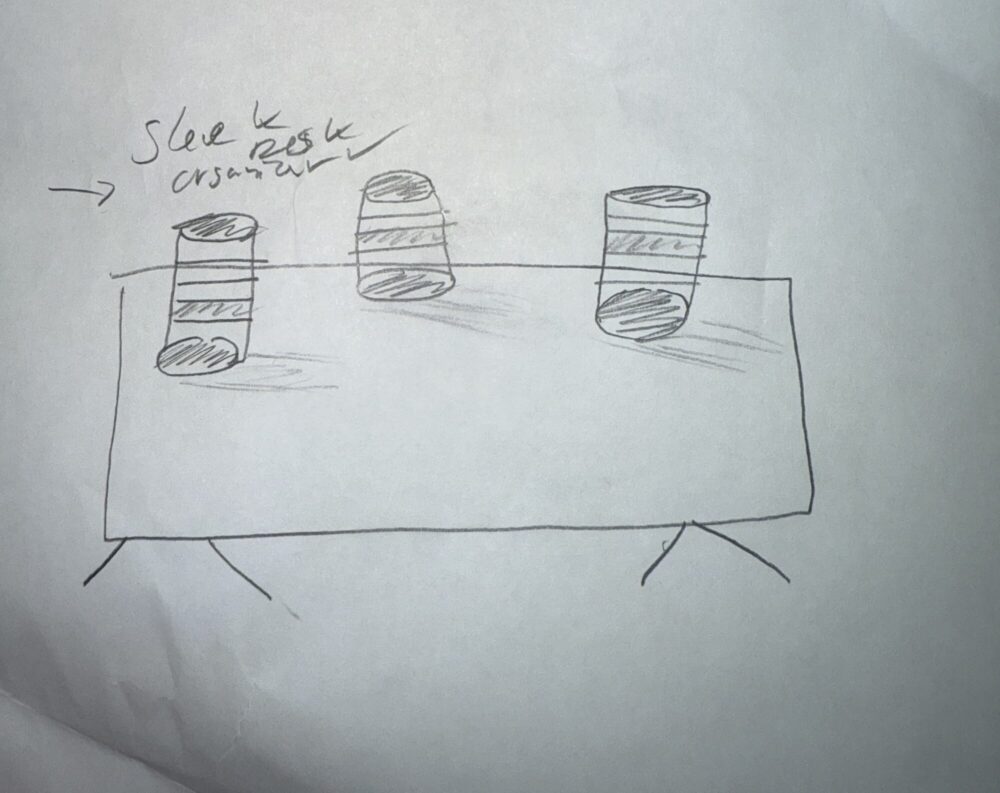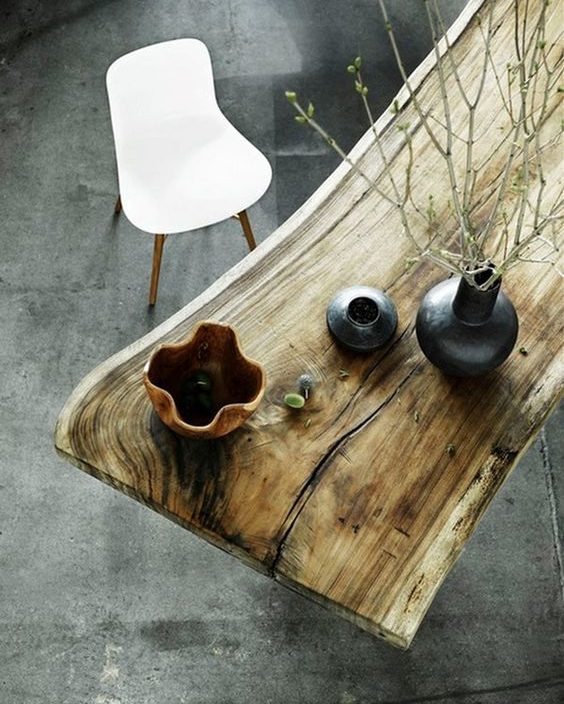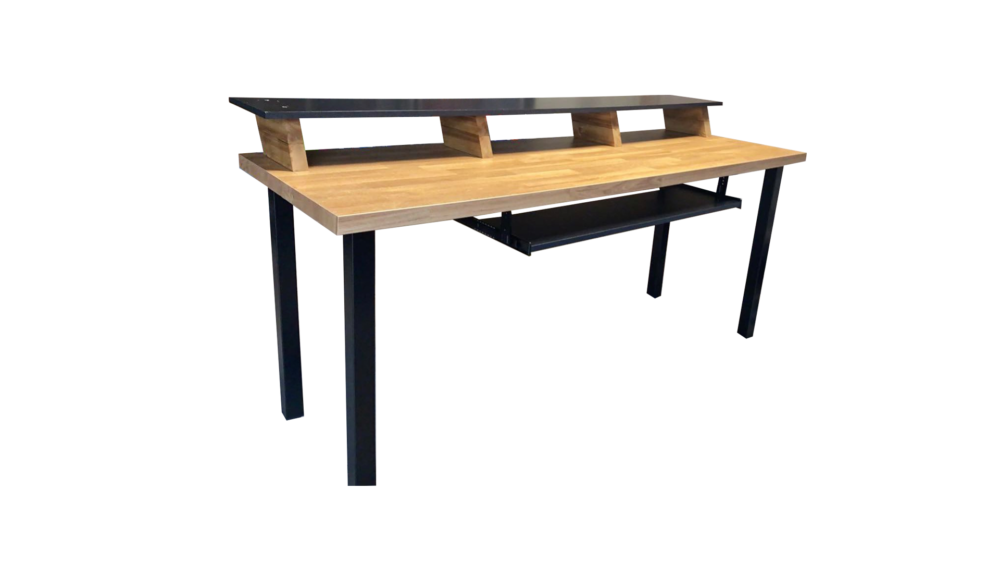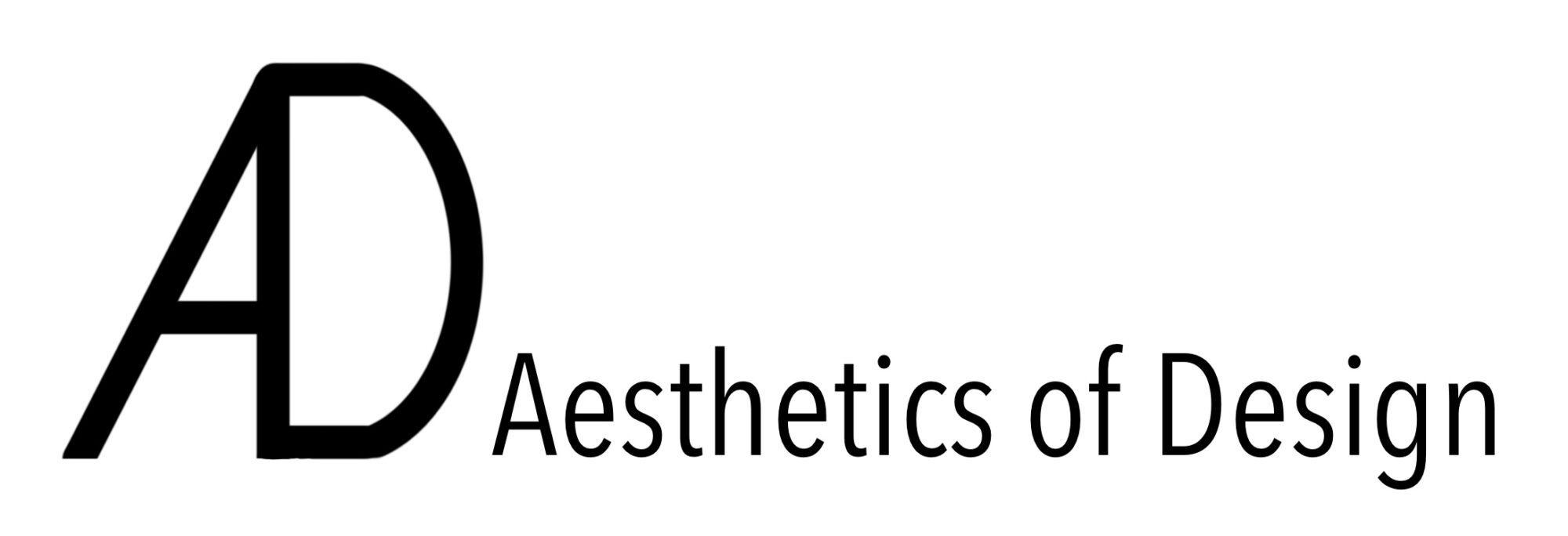Opposite Upcycle Aesthetic
For my Upcycle Project, I designed a Rustic Desk Organizer with a natural and handmade aesthetic, using reclaimed wood, tin cans, and twine. The design embraces imperfections, with a weathered wooden base and textured twine wrapping to enhance the rustic feel. By upcycling discarded materials, my goal was to create a functional yet eco-friendly workspace organizer with a warm, organic appeal.
What Is the Opposite of My Aesthetic?
The opposite of a rustic, handmade aesthetic would be a modern, sleek, and industrial look. Instead of embracing natural textures, raw wood grain, and twine, a modern design would focus on smooth surfaces, clean lines, and a polished, factory-made appearance. The overall vibe would shift from earthy and handcrafted to precise and high-tech.
How Would This Opposite Version Look?
-
Materials:
- Instead of using reclaimed wood with a rough, weathered texture, I would opt for acrylic, polished metal, or glass for a refined and contemporary feel.
- The twine would be replaced with rubber, leather, or steel wire for a sleeker finish.
- The tin cans, rather than keeping their original metallic or painted look, could be coated with a glossy or matte black finish to eliminate any signs of repurposing.
-
Color Palette:
- My current design relies on earthy browns, muted metallics, and natural fibers.
- The modern version would embrace a monochrome or high-contrast palette, such as all-black, white, silver, or even a pop of neon to emphasize a futuristic style.
-
Form & Structure:
- Rather than embracing asymmetry and natural imperfections, the modern version would have precisely cut edges, symmetrical compartments, and uniform spacing between containers.
- The wooden base might be laser-cut acrylic or a smooth aluminum slab rather than an aged piece of reclaimed wood.
-
Finishing Touches:
- Instead of wrapping twine for reinforcement and decoration, I would integrate magnetic attachments or modular slots to hold the cans securely in place.
- I could also add LED lighting strips underneath or around the base to create a sleek, tech-inspired glow.
Sketch of Opposite Aesthetic
 How Could I Modify My Current Materials to Fit This Look?
How Could I Modify My Current Materials to Fit This Look?
Since I already have tin cans, wood, and twine, here’s how I could reinterpret them for a modern aesthetic:
-
Refining the Wood:
- Instead of keeping it raw and textured, I could sand the wooden base smooth and paint it with matte black or glossy white paint for a polished finish.
- Alternatively, I could wrap it in brushed aluminum contact paper for a metallic look.
-
Upgrading the Tin Cans:
- Instead of leaving them as they are, I could spray-paint them in a uniform, glossy color like black, silver, or white.
- Wrapping them in vinyl or using a hydro-dip technique could also give a futuristic appearance.
-
Replacing Twine with Sleek Elements:
- Rather than using twine, I could use thin metal wire, rubber bands, or acrylic brackets to secure the cans in a structured way.
- A magnetic attachment system could replace the need for visible wrapping.
-
Reinforcing Structure with a Modular System:
- Instead of simply gluing the cans to the base, I could cut recessed slots into the wooden base for a flush, integrated look.
- I could also experiment with stackable or removable compartments for added functionality.
Final Thoughts
Reimagining my desk organizer in a sleek, modern aesthetic helped me see how materials and finishes drastically affect a design’s personality. While my original concept focuses on warmth, sustainability, and handmade charm, the opposite approach would emphasize precision, efficiency, and industrial design.
If I had more time, it would be interesting to create a second version of this project using these opposing principles to compare the two side by side. It also makes me think about hybrid approaches—perhaps incorporating some modern elements into my rustic design to refine it without losing its handmade charm.



4 Comments. Leave new
Hey Andrew I think your post does a great job of explaining your rustic desk organizer project and contrasting it with a modern, industrial aesthetic. The way you describe your design as “embracing imperfections” and having a “warm, organic appeal” is very clear and engaging. Your ideas for transforming the same materials into a sleek, modern version are creative and well thought out. I especially like how you considered using paint, vinyl, and modular systems to achieve a polished look. However, I’m curious about how you might balance functionality with the modern aesthetic. For example, could you share more about how the LED lighting or magnetic attachments would work in practice? How would these additions enhance the organizer’s usability while maintaining the modern vibe?
Hey! Thanks so much for your thoughtful response. I really appreciate that you found my contrast between the rustic and modern aesthetics engaging. Functionality is definitely something I’ve been considering with the modern version. For example, the LED lighting could be integrated along the edges of the compartments to provide subtle illumination for nighttime use, similar to ambient lighting in high-end tech setups. As for the magnetic attachments, I was thinking of incorporating a metal backing so that modular containers could be repositioned as needed, offering flexibility while keeping a clean and structured appearance. These features would enhance usability while reinforcing the sleek, modern vibe.
I greatly enjoyed reading your post. I found that your comparison between the rustic, handmade aesthetic and the industrial, modern aesthetic was very interesting. In my experience, I have always been drawn to the rustic aesthetic as the imperfections tell a story of the handcraft and workmanship that has been put into these objects. However, a modern aesthetic portrays more design based on state-of-the-art manufacturing methods. If you had a choice to create a hybrid of these two aesthetics, what aspects do you think you would incorporate from each aesthetic?
Hey! I really appreciate your response and your insight into the contrast between rustic and modern aesthetics. I agree that the imperfections in rustic designs add a lot of character and showcase the craftsmanship behind the piece, while the modern aesthetic emphasizes precision and innovation. If I were to create a hybrid of the two, I think I’d keep the natural textures and organic feel of the rustic style but incorporate sleek, geometric elements from the modern aesthetic. For example, I could use reclaimed wood with a live edge for warmth and character while integrating metal accents or minimalist compartments for a cleaner, more structured look. Maybe even a matte black finish on some elements to create that balance between handcrafted and high-tech.